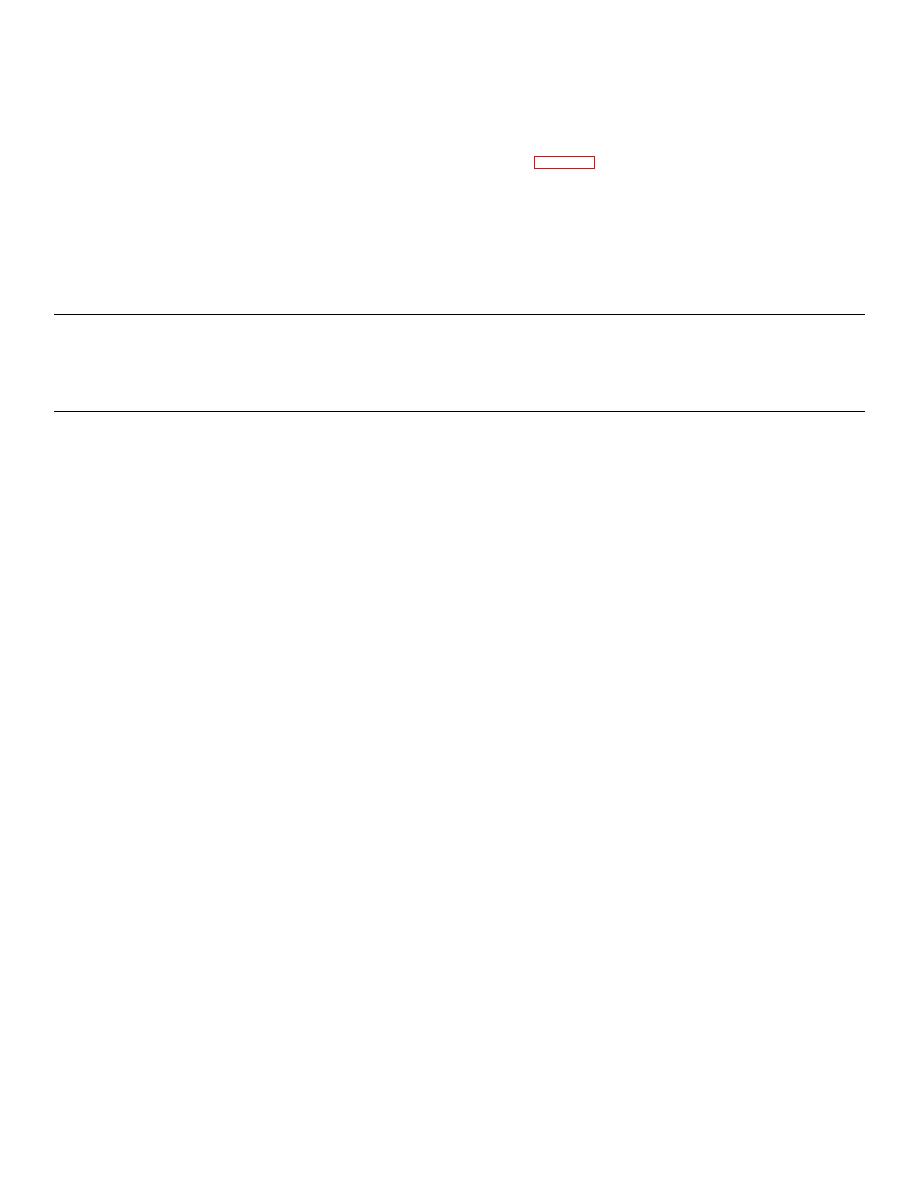 |
|||
|
|
|||
|
|
|||
| ||||||||||
|
|
 Section III. TROUBLESHOOTING
3-7. General
If you experience a malfunction which is not listed or is not
corrected by listed corrective actions, notify your supervisor.
a. This section contains troubleshooting information for
locating and correcting most of the operating troubles which
3-8. Operator/ Crew Maintenance Troubleshooting Chart
may develop in the pump assembly. Each malfunction for an
Refer to table 3-2 for troubleshooting which is allocated to
individual component, unit, or system is followed by a list of
operator/crew maintenance levels.
tests or inspections which will help you to determine probable
NOTE
causes and corrective actions to take. Perform the
Before you use this table, be sure you have
tests/inspections and corrective actions in the order listed.
performed all applicable operating checks.
b. This manual cannot list all malfunctions that may
occur, nor all tests or inspections and corrective actions.
Table 3-2. Troubleshooting
MALFUNCTION
TEST OR INSPECTION
CORRECTIVE ACTION
ENGINE
1. ENGINE FAILS TO TURN OVER WHEN STARTING BUTTON IS DEPRESSED.
Step 1. Check that battery disconnect switch in ON.
Turn battery switch on.
Step 2. Inspect for loose, corroded, or broken battery cables.
Clean corroded cables. Tighten loose connections at battery, ground, and starter.
If cables are broken, notify organizational maintenance.
2. ENGINE TURNS OVER BUT FAILS TO START.
Step 1. Check overspeed governor reset button.
Reset by pushing the reset button on top the engine overspeed governor.
Step 2. If engine is cold, check for proper choke operation.
Be sure choke control is out all the way, and is not binding, or only partially closed.
If choke control is binding, report to organizational maintenance.
Step 3. If engine is hot, check for flooded carburetor.
Open the flood relief drain cock on the underside of the carburetor, near the air inlet hose. Drain excess fuel.
Restart with both throttle control and choke control in all the way.
Step 4. Check for dirt or water in fuel filter bowl.
a. Close the shutoff valve on the fuel strainer.
b. Loosen the bail nut and swing the bail aside and remove the glass fuel bowl and gasket.
Empty the contents of the bowl and wipe it dry with a clean cloth.
c. Remove the filter element and inspect it for contamination If filter element is found to be contaminated,
replace it with a new one.
d. Position the filter element, gasket and fuel bowl on the strainer housing. Swing bail into position
and tighten the bail nut.
Step 5. Check for restricted fuel line.
Inspect fuel lines for breaks, kinks, or pinched sections. Remove kinks and relocate pinched sections.
Report other fuel line defects to organizational maintenance.
3. ENGINE STARTS BUT THEN STOPS.
Step 1. Check for open choke control when engine is warm.
Push in choke control.
Step 2. Check for adequate fuel supply.
Refill fuel tank
Step 3. Check for dirt or water in fuel filter bowl.
a. Close the shutoff valve on the fuel strainer.
b. Loosen the bail nut and swing the bail aside and remove the glass fuel bowl and gasket.
Empty the contents of the bowl and wipe it dry with a clean cloth.
c. Remove the filter element and inspect it for contamination. If filter element is found to be contaminated,
replace it with a new one.
d. Position the filter element, gasket and fuel bowl on the strainer housing. Swing bail into position
and tighten the bail nut.
Step 4. Check temperature gage to determine if overheating has tripped temperature safety switch.
Fill radiator to required level. Report broken fan belt or defective radiator hoses to organizational maintenance.
Add oil if engine oil level is low. Open the radiator stone shield if it is closed.
Step 5. Check oil pressure safety switch reset.
Add oil to crankcase to bring level to specified mark. Reset oil pressure safety switch. If safety
switch trips when oil level is not low, report to organizational maintenance.
3-8
|
|
Privacy Statement - Press Release - Copyright Information. - Contact Us |